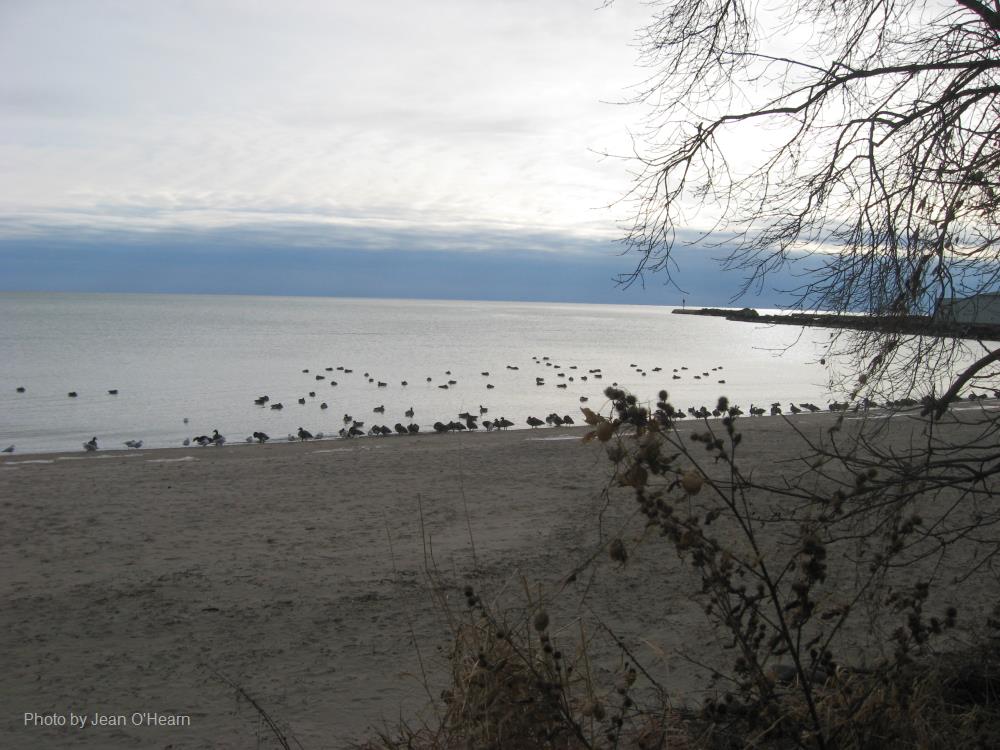
Related items loading ...
Section 1: Overview
Name of Research Project
|
Related Project
|
Part
|
|
GWF-PW: Prairie Water
|
1.2, A(i)
|
|
|
|
|
|
|
Program Affiliations
Related Research Project(s)
Dataset Title
Virtual Watershed Model Simulations for Typified Prairie Watersheds
Additional Information
Creators and Contributors
|
Chris Spence | Point of Contact, Principal Investigator | chris.spence@canada.ca | Environment and Climate Change Canada |
Jared Wolfe | Point of Contact, Project Manager | jared.wolfe@usask.ca | University of Saskatchewan |
John Pomeroy | Collaborator | | University of Saskatchewan |
Colin Whitfield | Collaborator | | University of Saskatchewan |
Kevin Shook | Collaborator | | University of Saskatchewan |
Balew Mekonnen | Originator | | Associated Engineering |
Zhihua He | Researcher | | University of Saskatchewan |
Emily Cavaliere | Researcher | | University of Saskatchewan |
Chrystal Mantyka-Pringle | Researcher | | Wildlife Conservation Society |
Helen Baulch | Collaborator | | University of Saskatchewan |
Robert Clark | Collaborator | | Canadian Wildlife Service |
Abstract
The dataset is comprised of inputs to and outputs from the Cold Regions Hydrological Model (CRHM) when it was run as a virtual model of two classes of Canadian Prairie watersheds, as defined by Wolfe et al. (2019). These classes are Pothole Till and High Elevation Grasslands. These watersheds represented typified prairie watersheds based on physiogeography and coherent response to environmental change.Model parameters were informed by the results of Wolfe et al. (2019). The .prj files necessary to run the virtual models are included in the dataset.
Climate forcing data are from the Adjusted and Homogenized Canadian Climate Dataset from a cohort of stations contained within each watershed class and cover a period from 1960-2006. There are a series of climate sensitivity scenarios that include applying a delta method to the original climate data (i.e., 1°C increments of warming, and -20%, +10%, +20% and +30% of precipitation). The .prj and .obs files for the baseline and each sensitivity scenario are included in the dataset.
Model output includes hourly catchment outflow, snow water equivalent, and surface storage for the baseline and each scenario.
In addition, virtual model outputs where linked to biogeochemical and biological models to calclate nutrient loading and biodiversity indicators. Nutrient load information is calculated using stream concentrations from the Pothole Till watershed class. Using the stream concentration-flow relationship, the hydrological data from the CRHM simulations were fed into these equations to estimate changes in nutrient loading. Wetland bird abundance and bird species richness are calculated using calculated pond areas that are modified from the CRHM outputs.
Purpose
Prairie Water is an interdisciplinary project that prioritizes research to address pressing water security challenges and knowledge gaps in order to enhance the resilience of prairie communities. The project’s objectives and research plans are informed by working with partners from governments, communities, non-profit organisations, and industry groups.
The dataset contributes to work packages 1.2, or A(i), under Phase II of Prairie Water, “analyzing future climate and land use change using Virtual Watershed modelling”. The dataset aims to assess hydrological sensitivity of Canadian Prairie catchments to climate with seven temperature scenarios and five precipitation scenarios, and contribute to our understanding of the hydrological, biogeochemical, and ecological response of prairie watersheds to climate and land management changes.
Plain Language Summary
Keywords
|
virtual |
watershed |
prairies |
climate change |
drainage |
hydrology |
nutrient loading |
Citations
Section 3: Status and Provenance
Dataset Version
1
Dataset Creation Date
Status of data collection/production
Dataset Completion or Abandonment Date
Data Update Frequency
Creation Software
Primary Source of Data
Other Source of Data (if applicable)
Data Lineage (if applicable). Please include versions (e.g., input and forcing data, models, and coupling modules; instrument measurements; surveys; sample collections; etc.)
Section 4: Access and Downloads
Access to the Dataset
Terms of Use
Does the data have access restrictions?
Downloading and Characteristics of the Dataset
Download Links and Instructions
Total Size of all Dataset Files (GB)
File formats and online databases
Other Data Formats (if applicable)
.obs, .prj
List of Parameters and Variables
|
Nutrient loads (Phosphorus, nitrogen) | kg/yr | annual | CRHM, basin outflow, stream nutrient concentrations and flows |
Wetland bird abundance | birds | scenario (10 years) | |
Wetland bird species richness | birds | scenario (10 years) | |
catchment outflow | m3/hour | hourly | CRHM |
snow water equivalent | mm | hourly | CRHM |
surface water storage | m3 | hourly | CRHM |
riparian habitat | m2/day | daily | CRHM, pond perimeter |
air temperature | C | hourly | AHCCD |
relative humidity | % | hourly | AHCCD |
wind speed | m/s | hourly | AHCCD |
precipitation | mm | hourly | AHCCD |


 GWFNet
GWFNet Master
Master Data
Data Research
Research Map
Map
 Advanced
Advanced Tools
Tools
 . . .
. . .
 Metadata Editor
Metadata Editor
 Record List
Record List
 Alias List Editor
Alias List Editor
 Legacy sites
Legacy sites